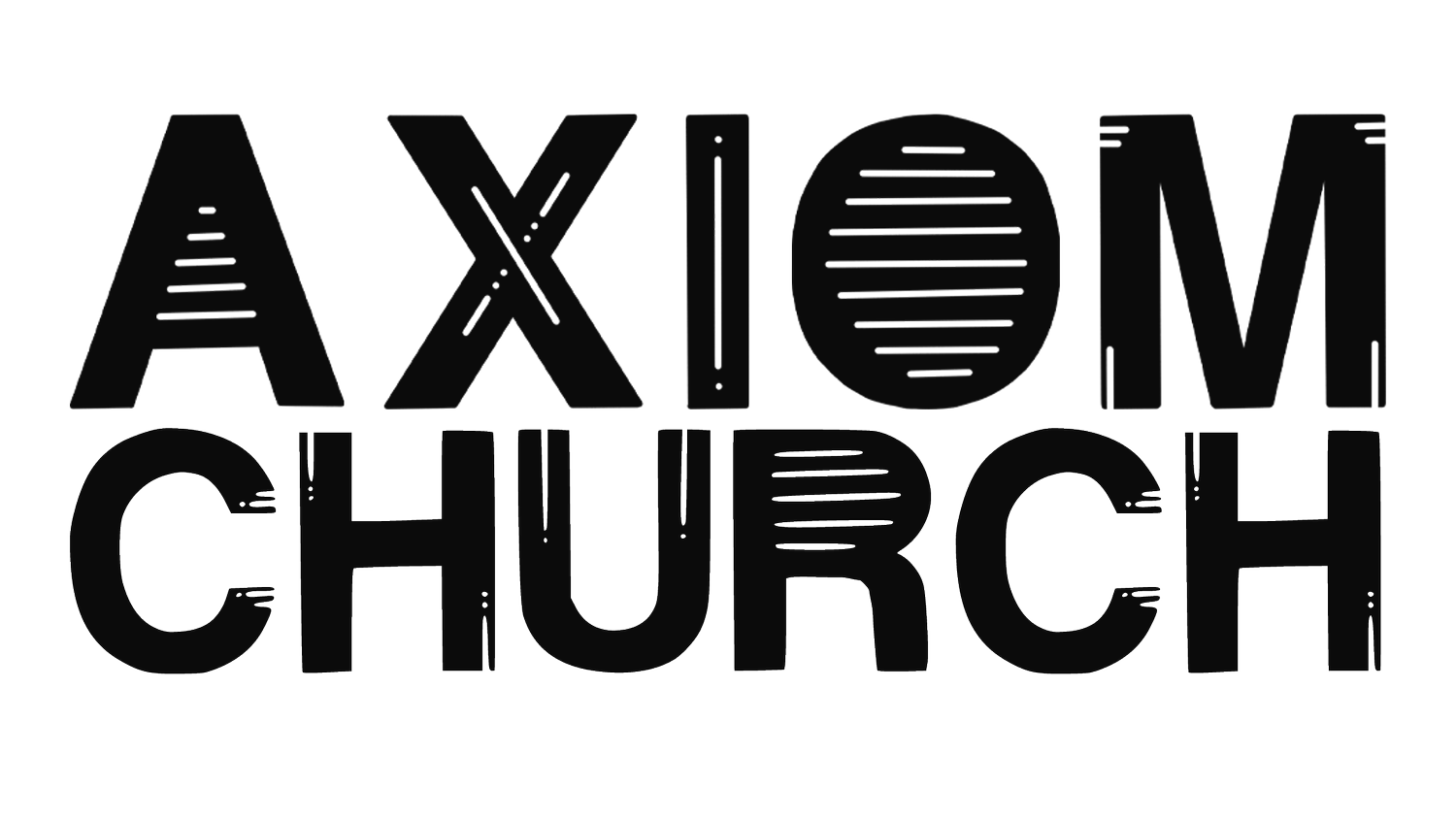By George Trifanoff
What is atonement? And why is it important for the Christian practice?
The question of atonement is critical in our understanding of the gospel.
Why did Jesus die and what is the meaning of his death?
Let me preface this with a note that these are mental constructs to aid our understanding, and were not codified as essential church doctrine by the early church councils.
The prevailing model of atonement in the western church today is penal substitutionary atonement [PSA], that Jesus paid the price to satisfy a debt to God that we humans could never meet. On the surface, this seems logical, just as how we talk about a person who has served a prison term — we say that they have atoned for their crime. And satisfied their penal obligation to society.
While it is the dominant view of contemporary Christians, it is not, as we will explore later, the atonement model championed by many other Christians, including Eastern Orthodox, order of Franciscan Catholics, and even Protestants belonging to various “peace” church denominations.
We are going to look at these terms more fully — atonement, sacrifice, satisfaction, substitutionary, redemptive, etc., but first, let’s take a quick dive into the history of the Christian faith, and how we got to where we are today concerning atonement.
BC: Sacrificial Religious Practices
Sacrifice has comprised an essential piece of every world religion since the dawn of humanity. Human sacrifice, revolting to us now(at least most all of us, I hope), was a standard religious practice, and this truth was reflected in early Bible verses. Eventually, human sacrifice was supplanted by animal sacrifice. And these rituals could be quite elaborate.
James Alison on ancient Jewish liturgy practice: [1]
For this liturgy the high priest would go into the Holy of Holies.… He would then go into the Holy of Holies, taking one of two goats – a goat which was the Lord, and a goat which was Azazel (the “devil”). He would take the first with him into the Holy of Holies and sacrifice it to the LORD; and with it he would sprinkle the Mercy Seat, and all that was in the First Temple, the throne on which were the Cherubim. This was a place that only the high priest was allowed to enter. Now the interesting thing is that after expiating his own sins with the bull, he would then don the white robe, which was the robe of an angel. From that point he would cease to be a human being and would become the angel, one of whose names was “the Son of God”. And he would be able to put on “the Name”, meaning “the name which could not be pronounced”, the Name of God. With the Name contained in the phylacteries either on his forehead or wrapped around his arms, he would be able to go into the Holy of Holies. (Remember the phrase, “Blessed is he who comes in the name of the Lord”? This is a reference to the rite of atonement, the coming in of the high priest – one of the many references to the rite of atonement we get in the New Testament – and of which we are largely ignorant!). So, he becomes an angel; and one of the angel's titles is “the son of God”. He sacrifices the goat that is “the Lord”, and sprinkles his blood about the place. The purpose of this was to remove all the impurities that had accrued in what was meant to be a microcosm of creation, because the Holy of Holies, in the understanding of the Temple, was the place where the Creator dwelt. The rite of atonement was about the Lord himself, the Creator, emerging from the Holy of Holies so as to set the people free from their impurities and sins and transgression. In other words, the whole rite was exactly the reverse of what we typically imagine a priestly rite to be about. We tend to have an “Aztec imagination” as regarding the sacrificial system. The hallmark of the sacrificial system is that its priest sacrifices something so as to placate some deity. …After which, as the person who was bearing the sins that had been accumulated, he places them on the head of what we call “the scapegoat”, Azazel, which would then be driven to the edge of the cliff and cast down, where it would be killed, so that the people's sins would be taken away.
So throughout human history, scapegoating and sacrifice have served as societal providers of cultural purifying agents. Transferring the sins of the guilty and/or scapegoating an innocent victim to cleanse and maintain group order served as a regular societal tonic.
Early Christians and Christus Victor
The early Christians shared the belief that Jesus set people free from the bondage of Satan. Christus Victor, is the atonement model label, where Jesus triumphs over the forces of darkness and the powers and principalities.
Still, seeds were already sown for later revisions to atonement theory. How did Satan hold power in the first place? Did God have to trick the devil, like one would with a mouse, cheese and mousetrap? (St. Augustine advanced this very image. [2]) Was Jesus the cheese that baited Satan?
This focus on the devil set the stage for the next big development that happened in the 11th century.
2nd Millenium: Anselm and Satisfaction
In 1096, a priest named Anselm, the Archbishop of Canterbury, authored an epic manuscript that would change the debate on atonement henceforth. It was titled Cur Deus Homo (“Why God Man?”) and was written as a response to educated Jewish scholars who claimed that Jesus-as-God-made-flesh was demeaning to God. Anselm argued that dishonor displayed to God was made right by Jesus death and honor restored.
It is not coincidental that 1096 also marks the year that Pope Urban II proclaimed the 1st Crusade, to recapture the holy land from the Muslim infidels. Reportedly, Anselm wrote part of this document on the battlefield.
“I demand satisfaction.”
Honor is the centerpiece here, and looking at societal relations in that age, it made some sense there. Consider a world full of kings, queens, knights, and feudal lords. Swearing fealty to an overseer, pledging your life and work, and in return, receiving protection and administering of justice. This honor-debt calculus constructs a Jesus who fulfilled a debt for which humankind could never satisfy.
Honor is to be upheld, and if fealty is cast aside or the powers that stand in the stead of God are offended, they must righteously channel divine violence to put these affairs back to their natural order.
Protestant Reformation: Honor and Wrath
The Protestant Reformation added “penal” to “substitutionary”. In the reformed view, Jesus is the stand-in for a holy terror that is the just deserts of what humans deserve from God. Humans sit in the crosshairs of divine violence, only spared by the blood of the crucified Christ.
This is the arc that carried us to circa 2020. But like stated above, not all Christians believe PSA to be the one true atonement doctrine. Eastern Orthodox Christians, for example, rejected or never accepted a good number of Roman Catholic and Protestant theological developments. By and large, Christus Victor is the operative atonement model, though to be fair, there are elements of ransom and substitution in their theological constructs.
The Trouble with PSA
Some critics of penal substitutionary atonement liken the concept to “divine child abuse”. I think that is overly harsh, not totally accurate. PSA does get half of things right — the redemptive blood of Christ does indeed wash us all clean. But I don’t believe it is transactional, based on an economy of exchange. This thread is not consistent with a heavenly creator that requires mercy, not sacrifice [3].
In the PSA model, God is a petty tyrant, offended in the same manner than humans are, and can pour wrath onto us at the slightest beckoning. Violence reigns, and whoever is anointed with the mantle of God’s blessing can inflict righteous violence for the “holy glory” of God.
But as Richard Rohr eloquently puts it: Jesus was not changing God’s mind about us; he was changing our minds about God [4].
We don’t need to be saved from an angry God, we need deliverance from fallen human anger.
A Better At-ONE-ment
Jesus is the lamb of God who takes away the sin of the world. [5]
The purpose of Jesus’ death is to shine forth the glory of God; to transform our web of human relations into a manifestation of the kingdom Jesus pronounced was at hand. Resurrection fulfills this glory. It is not just about the hereafter, it is also about transforming life now.
Jesus walked the human journey of failure and rejection — while forgiving his enemies — and then asked us to follow Him. Jesus was the final, ultimate sacrifice to end the practice of sacrifice. Whether it is the innocent or the enemy.
The redemptive grace, mercy, forgiveness, love, etc. of God is not to be earned at any price. It is a priceless gift. One can either walk in its radiant light or remain oblivious to it. It is not cheap, it is not expensive, it is priceless.
Contrast the Kingdom gift with an economy of exchange: debts are absolved, trespasses forgiven.
Salvation is not a one-time transaction but a continuous transformational experience. It reveals the redemptive and participatory love of a beautiful heavenly univocal creator, not a blood offering required by a Janus-faced God.
[1] James Alison, “Some Thoughts on the Atonement”, http://www.jamesalison.co.uk/texts/eng11.html
[2] Richard Beck, “Mousetrap”, https://experimentaltheology.blogspot.com/2012/05/mousetrap.html
[3] Matthew 9:13, Hosea 6:6
[4] Richard Rohr, “Salvation as At-One-Ment”, https://email.cac.org/t/ViewEmail/d/97EB35EAD45EFFF7/7BA1CB974E49B6F4C67FD2F38AC4859C
[5] John 1:29


